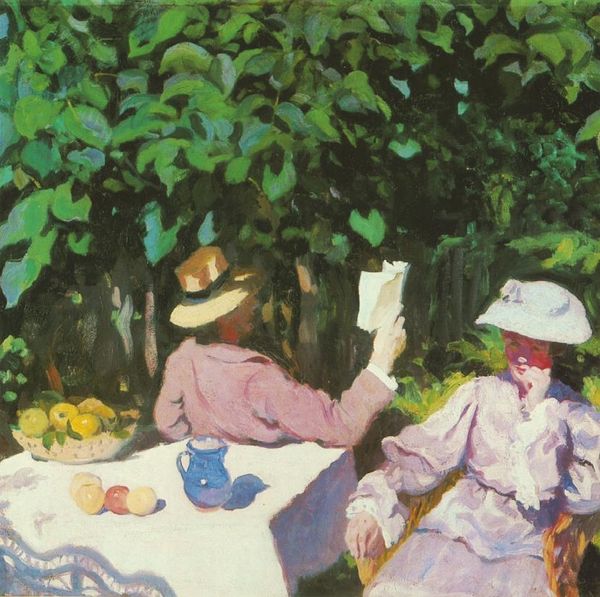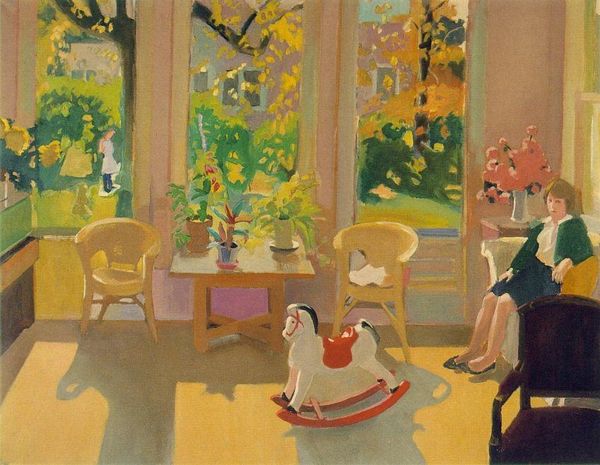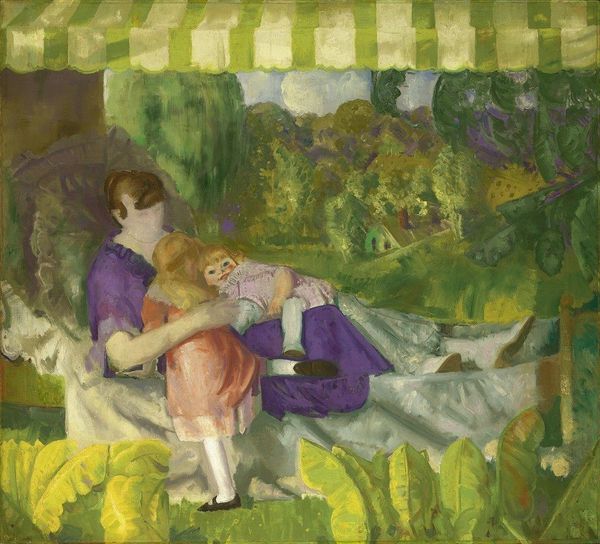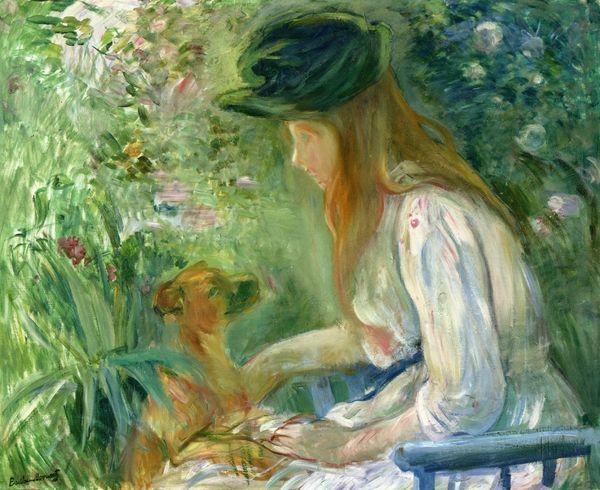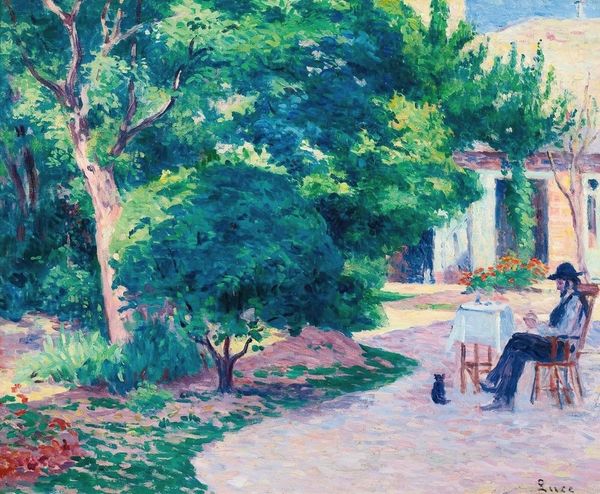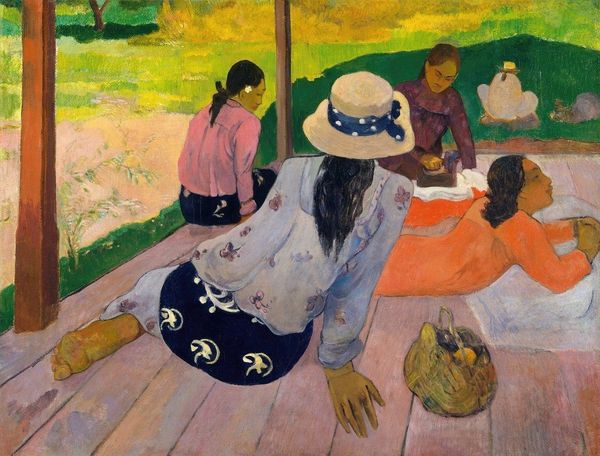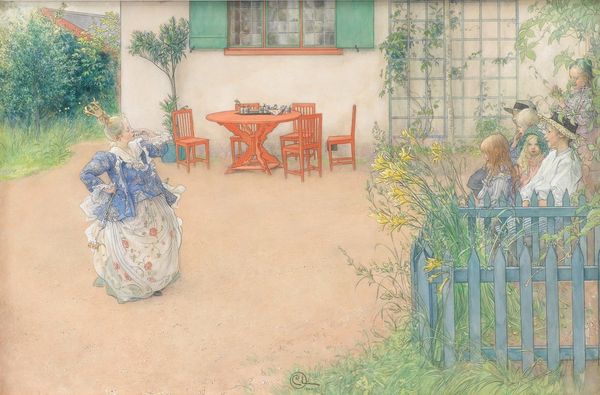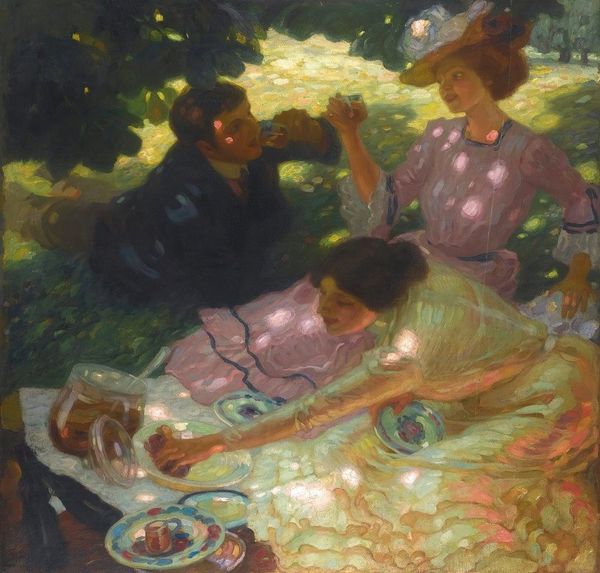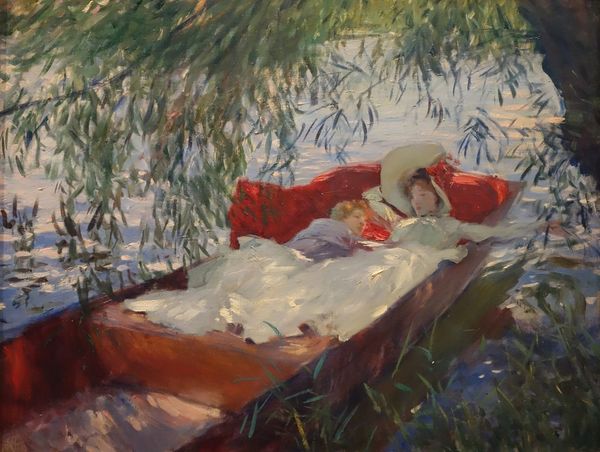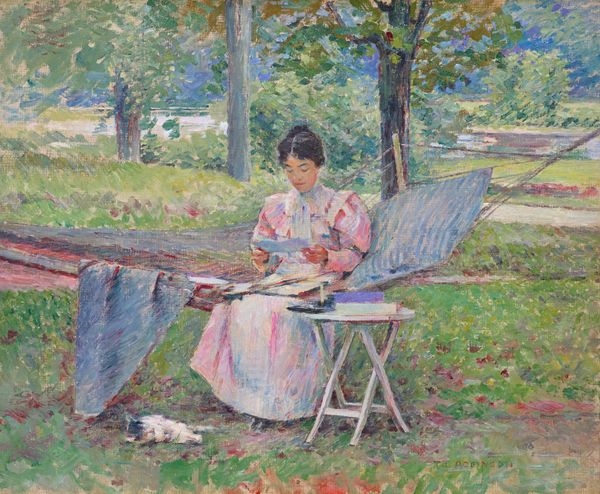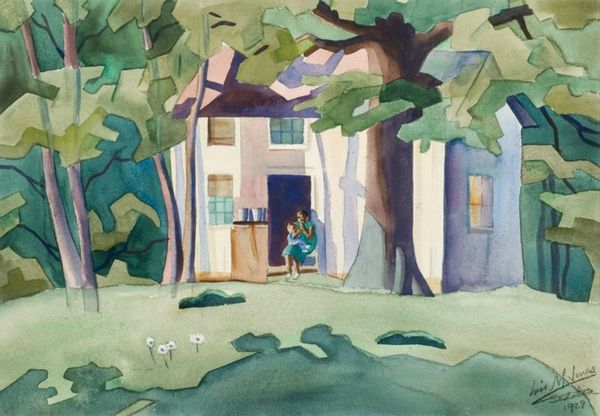
Copyright: Public Domain: Artvee
Editor: Here we have Carl Larsson’s “Holiday Reading” from 1916, a watercolor painting depicting a sun-drenched outdoor scene. I find the composition so peaceful, and the use of watercolor gives it a delicate, almost ephemeral quality. What's your perspective on it? Curator: Focusing on the materials and how they shape the scene reveals much about class and leisure in the early 20th century. The watercolor, the garden furniture, the tea set, and even the clothes, represent consumption and constructed environment. The means of production for such materials would have involved labor divisions we don't always consider today. Editor: That's a really interesting point. So, you're saying that the materiality of this seemingly simple scene is linked to broader societal structures and production methods? Curator: Exactly. Even the "plein-air" aspect indicates a shift in art production, away from purely studio work. Ask yourself, who could afford leisure time and art supplies in 1916? How does this setting naturalize a particular kind of existence? The watercolor, chosen over oil, aligns with ideas of domesticity and accessibility as a craft medium, perhaps even meant for a specific middle class audience interested in a certain lifestyle. Editor: I see what you mean. I hadn't really considered the implications of the watercolor itself. It's easy to get caught up in the subject matter and miss the message carried by the materials and production. Curator: This interplay between content and construction, or materiality, pushes the artwork into cultural history rather than simply being a representation of beauty. Look closely: does the materiality tell you anything more? Editor: Now that I look more closely, the mass produced goods speak of affordability within the upper class and hint at new commercial culture. It's made me realize how many layers there are within this 'simple' painting. Curator: Precisely, paying attention to materials and process encourages us to see how artworks actively participate in and reflect historical and societal conditions.
Comments
No comments
Be the first to comment and join the conversation on the ultimate creative platform.
